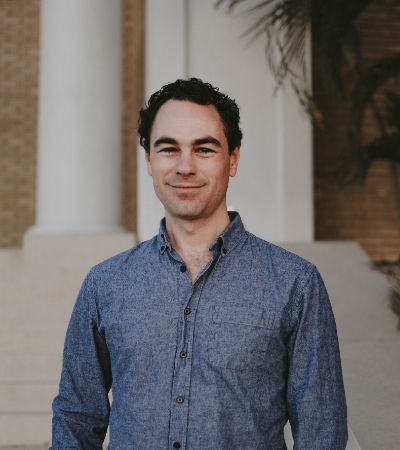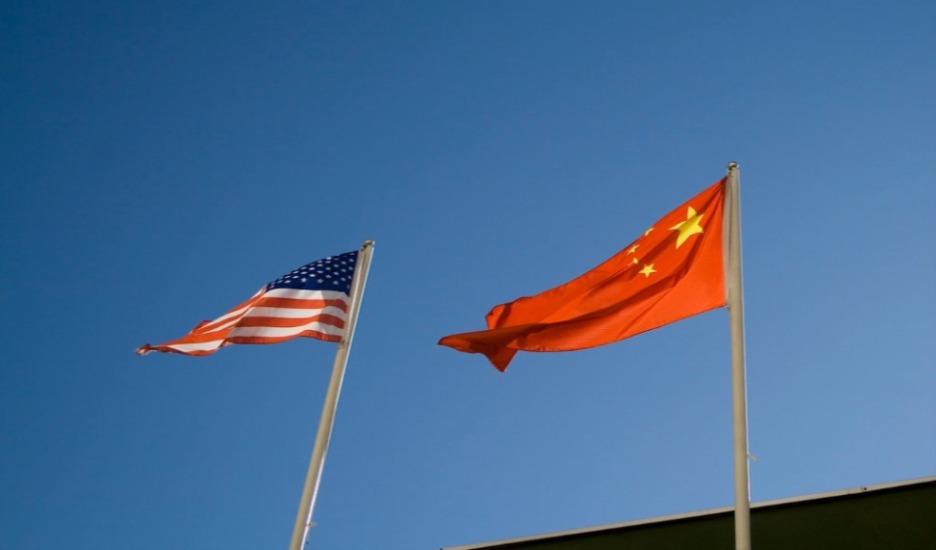Saudi Arabia Appoints New Crown Prince, Gulf States Issue Demands for Qatar, and Eastern Syria Is Getting Crowded
Saudi Arabia’s Rising Star Skips ahead in Order of Succession
Published by The Lawfare Institute
in Cooperation With

Saudi Arabia’s Rising Star Skips ahead in Order of Succession
After two years of grooming, Saudi Arabia’s King Salman last week appointed his son, Mohammed bin Salman, to be next in line for the crown. The decision cuts out the current crown prince, Mohammed bin Nayef, who has worked closely with the United States to reform the Kingdom’s counterterrorism practices since 2001; not only did King Salman’s decision bypass bin Nayef in the order of succession, it pushed him into retirement by removing him from his position as minister of the interior. Saudi Arabia has been ruled by the aging sons of the country’s founder, King Abdulaziz ibn Saud, since his death in 1953. Bin Salman’s youth is a radical departure from his octogenarian predecessors; at 31 years old, he is now positioned to rule Saudi Arabia for perhaps half a century when he succeeds his father.
Bin Salman’s short track record is mixed at best. Over the past couple years, he’s been given a broad portfolio of domestic and foreign-policy issues in his roles as minister of defense, second deputy prime minister, and president of the Council of Economic and Development Affairs. Some of his policy agenda has promise: He has been the driving force behind Saudi Vision 2030, the Kingdom’s ambitious economic reform plan developed with McKinsey & Company that includes alleviating Saudi dependence on oil through diversification funded by the privatization of the country’s behemoth state oil company, Aramco. It’s a bold and overdue initiative, but it's also still early in its implementation and delays are expected—and, like previous efforts to reform the Saudi economy, it could always be abandoned once it starts getting painful. Responding to his promotion, the Washington Post editorial board sounded a note of caution on Sunday: “His market-oriented economic reforms look stalled. Meanwhile, his aggressive initiatives in foreign affairs are proving self-defeating—and damaging to the interests of the United States,” they wrote.
It’s a good point. Saudi Vision 2030 is a qualified success, especially compared to bin Salman’s foreign policy debacles. As CFR’s Steven Cook writes, he’s been “a central player in the recent efforts to isolate Qatar” (more on just how well that’s going next). And as minister of defense, he’s one of the top officials responsible for Saudi Arabia’s role in Yemen’s civil war. More than two years into the Saudi-led intervention, the exiled government still spends much of its time in Riyadh and has only a tenuous hold of Aden and portions of the country’s Red Sea coast; the Houthis and loyalists to ousted President Ali Abdullah Saleh maintain control of Sanaa and much of the country’s north, and al-Qaeda in the Arabian Peninsula has thrived in the Yemeni interior. The most significant effect has been the humanitarian toll: Saudi defense planners disregarded U.S. targeting assistance in its air campaign and racked up so many civilian casualties that the Obama administration halted delivery of weapons purchased from the United States last year (a policy recently reversed by the Trump administration). The conflict has also precipitated a deadly cholera outbreak that Saudi Arabia is now scrambling to control. Last Friday, bin Salman announced that a royal family charity will donate $66.7 million to UNICEF and the World Health Organization’s humanitarian relief in Yemen, which will belatedly help efforts to treat the skyrocketing number of people infected by the preventable disease. The outbreak is now the worst in the world; more than 200,000 people have been infected across the country and more than 1,300 killed, with an estimated 5,000 new cases each day.
Gulf States Issue Demands to Qatar
A month after Saudi Arabia and its Gulf partners initiated their policy to isolate Qatar, last Friday they finally issued a list of 13 demands to the emirate that would completely upend the country’s policies. The ultimatum—relayed to Qatar through Kuwait, which has tried to mediate the dispute—calls on Doha to curb its ties to Iran, cut off connections to the Muslim Brotherhood and terrorist organizations, expel Turkish troops based in Qatar, shut down Al-Jazeera and other media outlets, pay reparations to its neighbors, and “[a]lign itself with the other Gulf and Arab countries militarily, politically, socially and economically.” It’s an exorbitant set of demands that came with a warning that Qatar has only 10 days to respond, though it is unclear what the penalty would be if that deadline passes. As The Guardian notes, if pushed through, the changes would “represent an effective end to Qatar’s independent foreign policy,” which has long been an annoyance to the Saudi-led bloc.
It’s easy to lose track of the fact that this crisis began with the pretext that the Saudi bloc was responding to inflammatory comments attributed to Emir Sheikh Tamim bin Hamad al-Thani—which were later reported to be posted by Russian hackers freelancing for an unknown third party. That minor incident was all the Saudi leadership, including the new heir, Mohammed bin Salman, needed to vent years of pent-up frustration against Qatar; since then, they and their allies have responded by expelling Qatari citizens, shuttering Al-Jazeera offices, and closing off Qatar’s only land border. The Gulf’s lunge against Qatar seems to have been initiated with no clear strategy or endgame—the demands were only issued after a U.S. State Department spokesperson said she was “mystified” by the Gulf’s intent and suggested that it may be acting on “long-simmering grievances” rather than pure counterterrorism motives, and the list seems designed more to perpetuate the feud than to resolve it.
Though the list of demands starts with Iran, Gregg Carlstrom writes for The Atlantic that the Gulf states are motivated by other grievances. “The first item, which asks Qatar to cut ties with Iran, is a red herring,” he argues. “While they maintain cordial relations—a necessity, because the two countries share a massive natural gas field—they are hardly close. Doha also trades far less with Tehran than Dubai does, a fact that has gone strangely unmentioned on Al Arabiya in recent weeks.” That’s born out by the rest of the demands, which focus on media organizations and “terrorist groups”—according to the Saudis’ overly-broad definition, which conflates political Islamism with terrorism. The Saudi bloc’s targeting of Qatari-based journalists goes beyond just the often-problematic reportage of Al-Jazeera Arabic and includes its English-language affiliate as well as other outlets with ties to Doha, like the progressive Al-Araby al-Jadid, and comes amid a broader crackdown on independent media in the Middle East. The Saudis seem to have built in some room for negotiation—for instance, Saudi Arabia doesn’t need reparations from Qatar—but any acceptance of the demands would neuter years of Qatari policy to position itself as a hub for diplomacy and ally of political Islamist groups.
The U.S. response to the crisis continues to be a disjointed mess. Even as the State Department pressured the Saudis last week to make their intentions clear and move toward a resolution, the White House was signaling that it will not exert pressure on the issue. “The four countries that are part of that—we believe it's a family issue and that they should work [it] out,” Press Secretary Sean Spicer said last Friday. Kristian Ulrichson, a professor and associate fellow at Chatham House, wrote on Twitter that Spicer’s comments evoke the U.S. response to the Iraqi invasion of Kuwait that Saddam Hussein misinterpreted to mean the United States wouldn’t intervene. The tension stems from divergent perspectives within the Trump administration on how to respond to the crisis, the New York Times reports. While U.S. Secretary of State Rex Tillerson has pushed for quiet diplomacy to swiftly de-escalate and resolve the current crisis, President Trump has acted more on the advice of his advisors Stephen Bannon and Jared Kushner, who have advocated siding with Saudi Arabia. Amid this confusion, Sen. Bob Corker, the chairman of the Senate Foreign Relations Committee, asserted Congress’ power to nudge the countries toward a settlement to the crisis; in a letter to the U.S. State Department on Monday, Corker said he would not “provide any further clearances” for U.S. arms sales to the Gulf states until there is “a better understanding of the path to resolve the current dispute and reunify the GCC.” It’s an unusual move, but one that—at least in the near term—seems to be mostly for show. Congress just approved a new $500 million sale to Saudi Arabia earlier this month and Corker’s statement won’t affect the recently renewed delivery of weapons purchased in 2015, though there are more sales to Saudi Arabia expected in coming months that could be affected if the crisis drags on. What Corker’s hold could block soon is the pending sale of F-15s to Qatar, which seems like a perk for the Saudi bloc rather than a disincentive.
The United States Can’t Decide on a Policy in Eastern Syria
After a spate of skirmishes in eastern Syria in recent weeks that culminated in the U.S. military shooting down two drones and a Syrian warplane, a U.S. military spokesman said that the United States would welcome the Assad regime taking a more assertive role if it targets Islamic State-held areas. "If it looks like they are making a concerted effort to move into ISIS-held areas, and if they show that they can do that, that is not a bad sign," Col. Ryan Dillon said at a press conference at the Pentagon last week. "We are here to fight ISIS as a coalition, but if others want to fight ISIS and defeat them, then we absolutely have no problem with that.” Dillon pointed to areas southeast of Raqqa near the Syria-Iraq border where the Assad regime could play a constructive role. “We as a coalition are not in the land-grab business. We are in the killing-ISIS business. That is what we want to do, and if the Syrian regime wants to do that and they're going to put forth a concerted effort and show that they are doing just that in Abu Kamal or Deir el-Zour or elsewhere, that means that we don't have to do that in those places,” he said.
That’s a departure from what appeared until recently to be a U.S. effort to stake out a sliver of land in eastern Syria to protect local U.S.-backed forces and prevent the Assad regime and Iranian proxies from consolidating control of a land corridor from Tehran to the Mediterranean. Dillon’s comments seem to suggest that the U.S. interest in eastern Syria is narrower than that. That’s where things stand now, but they’re still subject to change as the United States comes into more and more conflict with Syrian forces and Trump advisors push for a more confrontational approach to Iran. “Syria is quickly devolving into a free-for-all,” Jonathan Spyer wrote this week in Foreign Policy. “There is a high possibility of further friction among regional powers, as the Russians, Americans, and their various clients scramble to realize mutually incompatible objectives—specifically in the areas of eastern Syria held by the now collapsing ‘caliphate’ of the Islamic State.” As Vali Nasr warned in the New York Times, “We are sleepwalking into a much broader military mandate, without saying what we plan to do afterward.” If the Trump administration shifts to a policy endorsing regime change in Tehran, as some officials close to the president are advocating, that would only further escalate U.S. confrontation with Iran across the region, and especially in southeast Syria.


.jpg?sfvrsn=5a43131e_9)


